Walking may seem simple—one step in front of the other. But for someone using a prosthetic limb, there’s a lot more going on beneath the surface. One of the most important parts of getting a prosthetic to feel “just right” is something called alignment. If alignment is off, even by a little, it can affect how you move, how comfortable you feel, and how much energy you use just to get through the day.
There are two main types of prosthetic alignment: static and dynamic. These terms might sound technical, but they play a huge role in how your prosthesis works with your body. Whether you’ve just started your prosthetic journey or have been using one for years, understanding the difference between static and dynamic alignment can change how you walk, how much you enjoy daily life, and how much strain you put on your body.
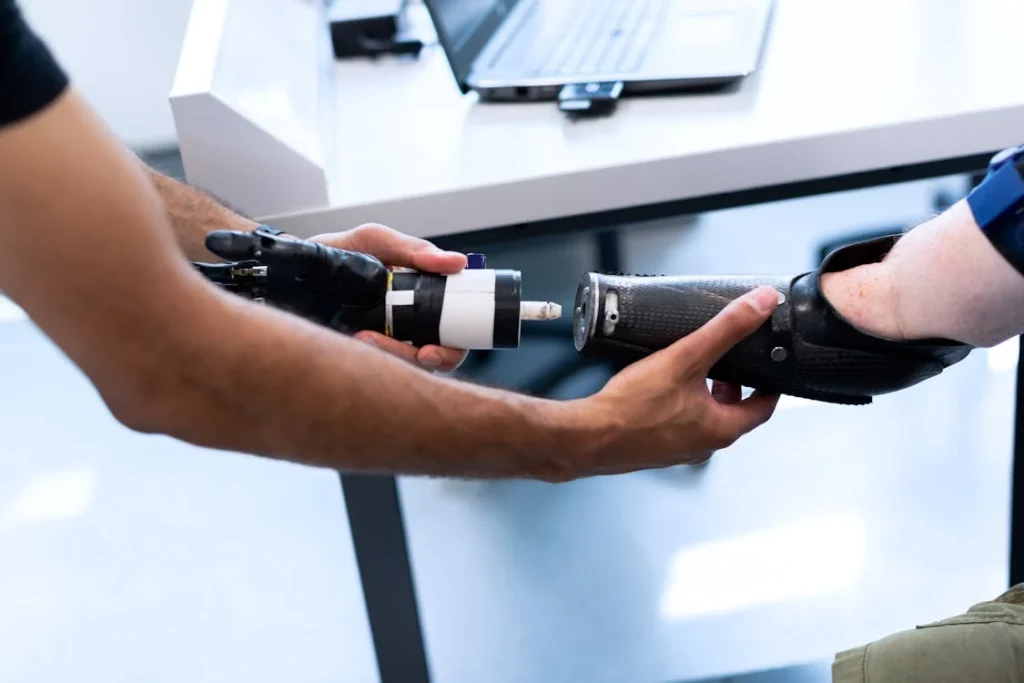
Understanding Alignment in Prosthetics
Before we dive into dynamic and static alignment, it’s important to understand what “alignment” really means when it comes to a prosthetic limb. It isn’t about how straight the limb looks or how tightly it fits. Alignment is about how your prosthesis is set up in relation to your body—your bones, joints, and natural movements.
A properly aligned prosthesis helps your body move more naturally. When the alignment is off, it can throw everything else out of balance.
What Happens When Alignment Is Off
If you’ve ever worn shoes that just don’t feel quite right, you already have a sense of what poor alignment can feel like. With prosthetics, the effect is even more intense.
Misalignment can cause discomfort, pressure points, uneven walking, and even pain in places you wouldn’t expect—like your lower back or the opposite limb. Over time, small issues in alignment can cause big problems in your joints, muscles, and even your confidence.
Alignment isn’t just about comfort. It affects every part of your daily movement—from walking to climbing stairs to standing still.
That’s why prosthetists spend so much time fine-tuning the way your prosthetic is set up. And that’s where static and dynamic alignment come into play.
What Is Static Alignment?
Static alignment is the very first setup done by your prosthetist. It usually happens while you’re standing still. The goal is to make sure the prosthetic limb is in the right starting position—lined up properly with your body when you’re not moving.
Think of it as the foundation of a house. If the base isn’t level, everything else that comes later is going to have problems.
How Static Alignment Is Done
When setting static alignment, your prosthetist will have you stand upright, usually between parallel bars. They’ll look at your posture, the way your weight is distributed, and how your prosthetic limb lines up with the rest of your body.
They’ll check that your knee is in the right spot, that your foot is flat on the ground, and that your hips and shoulders are even.
It’s a careful process. Even tiny adjustments—like tilting the foot slightly or moving the socket a few millimeters—can change how you feel when you take a step.
During this stage, you won’t be walking yet. It’s all about getting your body and the prosthesis into a balanced, neutral position.
Why Static Alignment Matters
Static alignment is important because it sets the stage for everything else. If this part is done well, your prosthetist can move on to dynamic alignment with confidence.
If it’s not done right, everything that follows will feel off, no matter how much adjusting is done later.
You might not notice much during the static phase, especially if you’re new to prosthetics. But the goal is to make your body feel supported and natural when you’re standing still. It’s the first step toward building a comfortable, efficient walking pattern.
What Is Dynamic Alignment?
Once static alignment is set, the next phase is dynamic alignment. This is where things get more interesting—and more personal. Dynamic alignment happens while you’re moving.
It’s about fine-tuning your prosthetic limb based on the way you walk, how your body reacts, and how everything feels in motion.
The Role of Movement
Dynamic alignment starts once you begin walking with your prosthesis. Your prosthetist will observe how you move—how your foot hits the ground, how your knee bends, whether your shoulders stay level, and if you’re favoring one side over the other.
Every person’s gait is unique, and this stage is all about customizing the prosthesis so it works with your natural movement, not against it.
This phase can take time. It’s not unusual to go through multiple rounds of walking, testing, adjusting, and repeating.
Each small tweak brings you closer to a smoother, more balanced walk. It can feel tedious, but it’s one of the most important parts of the fitting process.
Adjustments That Might Be Made
During dynamic alignment, your prosthetist might change the angle of the foot, shift the position of the socket, or adjust the height of the prosthesis.
They might also change the stiffness of components, or the timing of movement in more advanced devices. You’ll likely be asked questions like: Does this feel more natural? Do you feel like you’re working harder on one side? Are you feeling any pressure or pain?
You might not always know the right words to describe what you’re feeling—and that’s okay. Your feedback, combined with your prosthetist’s observations, will guide the process. It’s a two-way street that requires trust and patience.
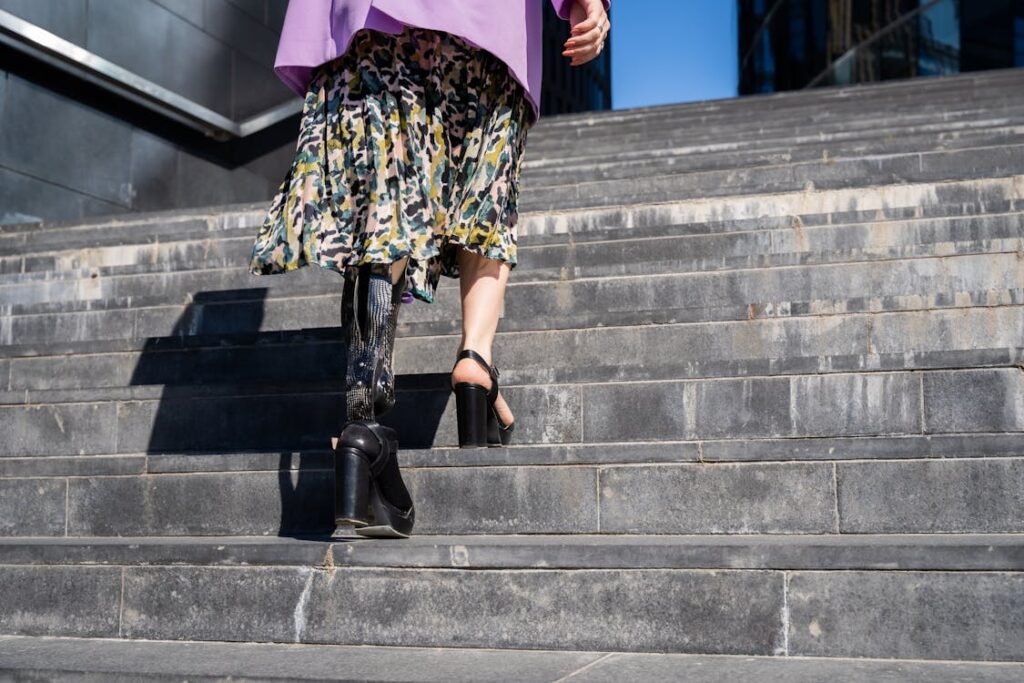
Why Dynamic Alignment Is a Game-Changer
Dynamic alignment is where your prosthesis becomes truly yours. Unlike static alignment, which is mostly about structure, dynamic alignment adapts the prosthesis to your real-world use.
Every person walks a little differently—your stride length, your posture, your muscle strength—all of that plays into how you move. Dynamic alignment accounts for these differences, helping you walk with less effort, better posture, and more comfort.
It’s All About Balance and Efficiency
When dynamic alignment is off, your body works harder to compensate. You might feel tired faster. You might shift your weight awkwardly or lean more on one side.
Over time, this can wear down your joints and muscles and even cause injuries—not just in your residual limb, but also in your hips, spine, and even your neck. Proper dynamic alignment spreads your weight evenly and makes your walk smoother, reducing the physical effort required to move.
You might not notice these changes immediately, especially if you’re still getting used to walking again. But the difference in how your body feels at the end of the day can be huge. A well-aligned prosthesis can be the difference between dreading movement and enjoying it.
Alignment Needs Can Change Over Time
Another key reason dynamic alignment is so important is that your body doesn’t stay the same forever. As you get stronger, more confident, and more active, the way you walk will change.
Your muscles may develop differently, your balance might improve, and your stride may shift. All of these changes can affect how your prosthesis should be aligned.
That’s why ongoing check-ups with your prosthetist matter. Even if things feel “okay,” there’s always room for small tweaks that can reduce pressure, increase stability, or make you feel more secure on uneven surfaces.
Sometimes, a quick adjustment can fix a nagging issue you didn’t even know could be fixed.
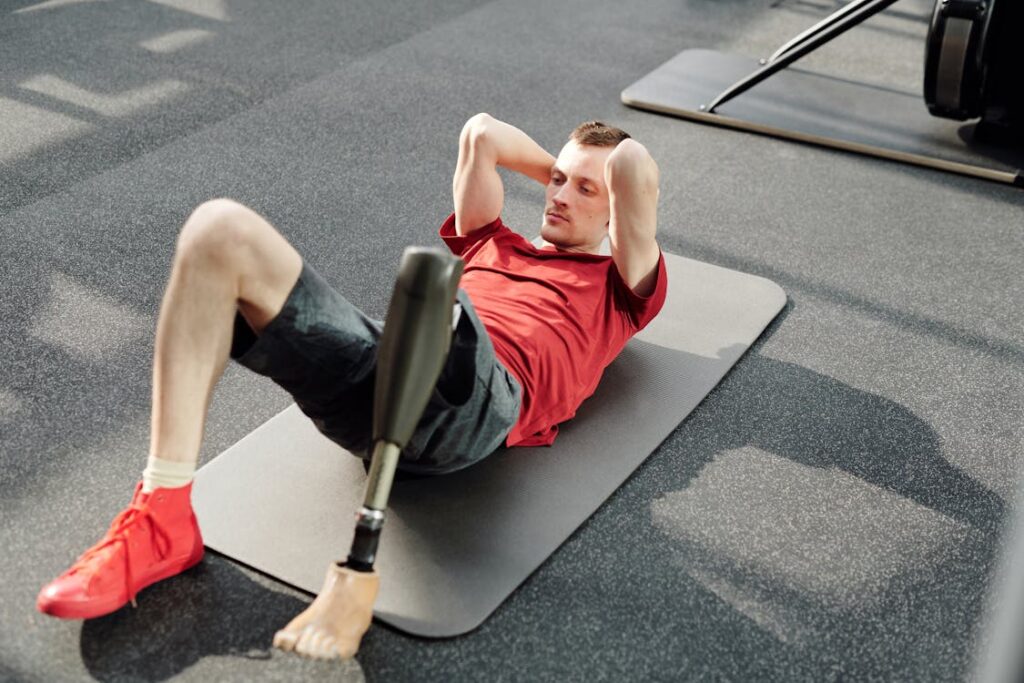
How Alignment Affects Your Daily Mobility
You might be wondering: how does all of this affect the way I live my everyday life? The answer is simple—alignment influences everything.
From standing in line at the store, to walking in your house, to going for a walk in the park, the way your prosthetic limb is aligned plays a huge role in how comfortable and confident you feel.
Walking Feels More Natural
When your prosthetic limb is aligned properly, walking feels more fluid. You’re not thinking about every step.
You’re not overcompensating with your other leg or adjusting your upper body to make up for awkward motion. The movement flows better, and your brain isn’t constantly focused on trying to stay upright or balanced.
This ease of movement builds trust. You start believing in your prosthesis. You begin to feel like it’s part of you, not something you have to fight against.
That feeling of trust is crucial, especially in the early stages of adapting to life with a prosthetic limb.
Better Posture and Less Pain
Misalignment can create long-term postural problems. If your body constantly adjusts to a poorly aligned prosthesis, you can develop habits that put strain on your back, shoulders, and neck.
Over time, that discomfort can become a daily issue. Proper alignment promotes a straighter spine and more balanced muscle use, which reduces the risk of injury and chronic pain.
It’s not just about walking. Even standing for long periods or shifting your weight from one foot to another becomes easier and less tiring with a well-aligned limb.
Everyday Activities Become Easier
Simple actions—like stepping off a curb, walking on grass, or climbing stairs—rely on your body working in sync. If your alignment is off, these moments can become stressful.
Your brain might overthink each movement, and your body may hesitate. With the right alignment, these things feel more automatic. You focus less on “how” to move and more on just living your life.
You might even find that you enjoy being more active. Many prosthesis users find themselves walking more, exploring new places, and joining social activities more often once their alignment feels right. It’s about building confidence, one step at a time.
Getting Involved in Your Alignment Process
You don’t have to be an expert to be involved in your prosthetic alignment. In fact, your input is one of the most valuable parts of the entire process.
No one knows how your prosthesis feels better than you. Your prosthetist can guide and observe, but only you know when something feels off or just right.
What You Can Share with Your Prosthetist
Pay attention to the small details. Are you feeling more tired than usual at the end of the day? Are you getting blisters or skin irritation in one area? Do you find yourself leaning more on one leg, or swinging your hip to clear the prosthetic foot when walking?
These little observations can help your prosthetist make precise changes. Be honest and descriptive, even if you don’t know the technical terms.
Say things like “it feels like I’m falling to the side” or “my foot feels too far forward.” These kinds of notes can lead to real improvements.
Don’t Be Afraid to Ask for Adjustments
Sometimes, people feel hesitant to speak up. They don’t want to be a bother, or they assume they just need to “get used to it.” But living with discomfort is not the goal.
Your prosthesis should support your body, not strain it. You deserve to move freely and confidently, and that starts with speaking up when something doesn’t feel right.
Your prosthetist is there to help. They expect adjustments to be part of the process, especially in the first few months after getting a new prosthesis or as your body changes.
You don’t have to wait for pain or injury to make a change—early feedback leads to better outcomes.
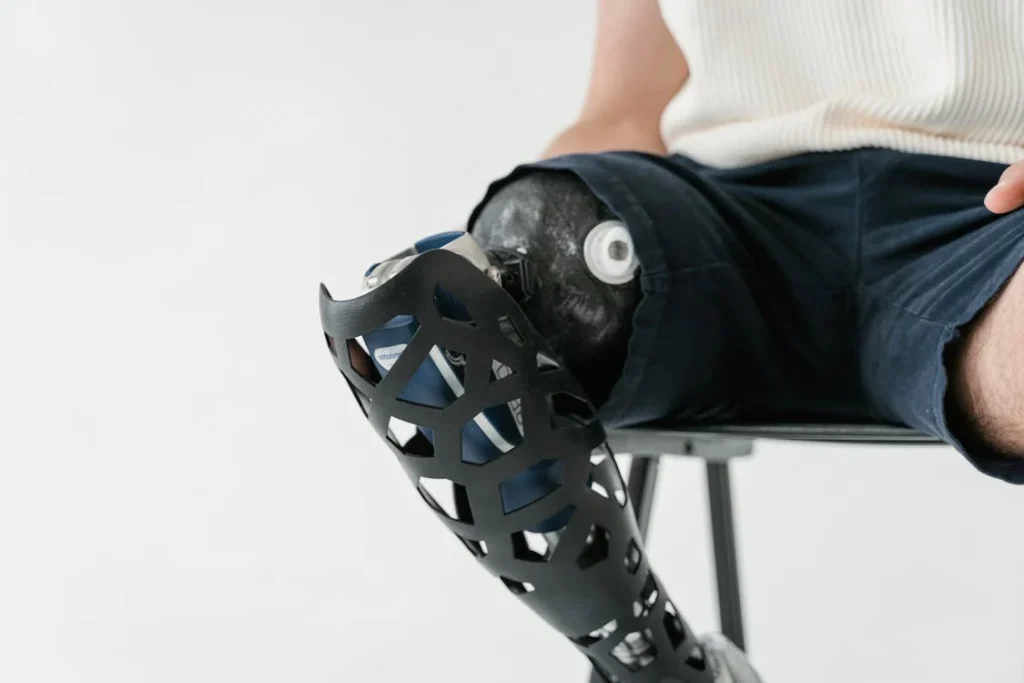
Long-Term Impact of Proper Alignment
Most people focus on alignment during the initial fitting and early walking stages. That’s important, but what happens months or years down the road? Alignment isn’t a one-time fix.
It’s a long-term commitment to your comfort, health, and independence. Your prosthetic limb is not static, and neither is your body. They both evolve, and your alignment should too.
Preventing Wear and Tear on Your Body
Even if everything feels “fine” now, poor alignment can quietly build problems over time. Your body is smart, and it will compensate for small imbalances. But those compensations come at a cost. Maybe your hip starts to ache. Maybe you notice your shoulders slouch or your knees feel stiff.
These small symptoms are your body’s way of adapting to misalignment, and if ignored, they can turn into serious joint issues or muscular imbalances.
Good alignment prevents these issues before they start. It helps distribute pressure evenly across your body, so no one part is doing more work than it should.
That means less pain, fewer injuries, and a much healthier body overall—especially important for prosthesis users who want to stay active and mobile for years to come.
Better Energy Efficiency
It’s easy to underestimate how much energy it takes to walk with a prosthesis. When alignment is off, every step takes more effort. Your muscles work harder to keep you upright. Your brain pays closer attention to every move.
It’s exhausting. Many users don’t realize how tired they are until they experience what a well-aligned prosthesis feels like. The difference is often night and day.
When alignment is dialed in, you move more efficiently. Each step flows into the next with less thought and less energy.
That means you can walk longer, feel less tired, and enjoy your day without needing to take frequent breaks just to recover.
Confidence Begins with Comfort
There’s something incredibly powerful about being able to move confidently. Whether it’s walking into a room without hesitation or navigating a crowded street, the way your prosthesis moves affects how you feel.
If it’s unsteady, painful, or awkward, you may second-guess yourself or avoid certain places altogether. That kind of hesitation chips away at your independence.
Emotional Impact of Alignment
Comfort is more than physical—it’s emotional too. When your prosthesis feels like a natural extension of your body, your entire mindset shifts. You stop thinking about limitations and start focusing on what you can do.
That’s why alignment isn’t just about walking well—it’s about living well.
If you’ve ever avoided a walk because you weren’t sure how your prosthetic would behave, or hesitated to attend a social event because you were worried about your movement, you’re not alone.
These are common, real concerns. But many of them can be reduced or even eliminated with proper alignment and regular check-ins.
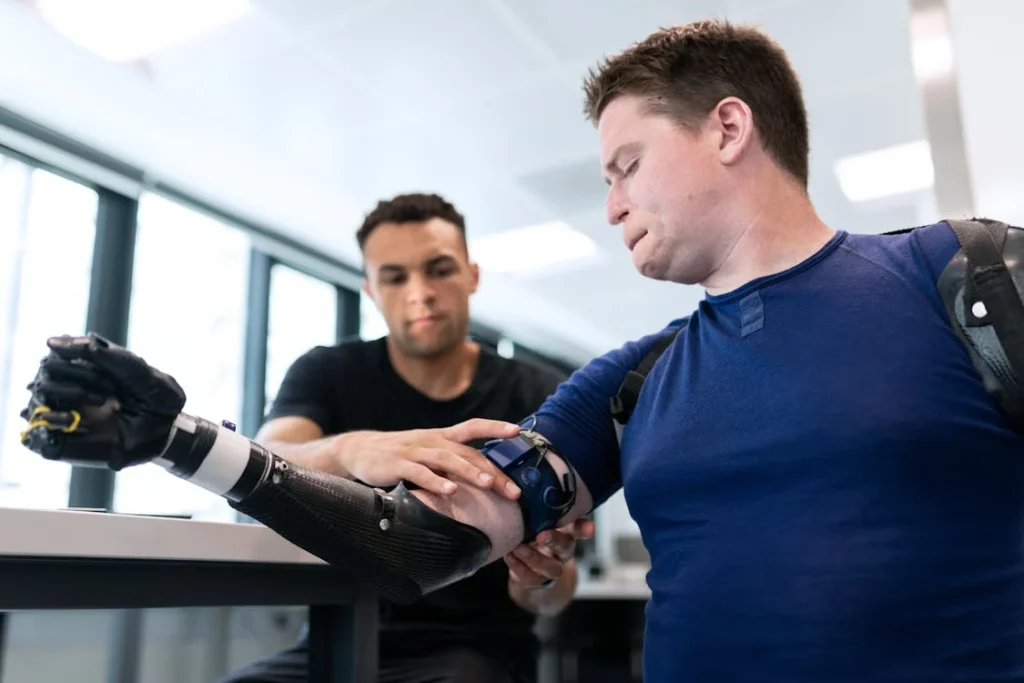
Your Prosthetist: A Partner in Motion
You don’t have to go through this alone. One of the best parts of prosthetic care today is that you have access to experts who are trained to make your life easier.
Your prosthetist isn’t just someone who builds your prosthesis. They’re your coach, your support system, and your guide to walking with strength and ease.
Building a Long-Term Relationship
The first fitting is just the beginning. As you move through life—getting stronger, more active, or even just older—your alignment needs will change.
That’s normal. Staying in touch with your prosthetist ensures your device continues to work with you, not against you.
It’s okay to schedule an appointment even if you’re not in pain. In fact, it’s encouraged. The best time to make adjustments is before something becomes a problem.
Many users wait until discomfort shows up to speak up—but routine follow-ups allow small issues to be caught early.
What to Expect During an Alignment Visit
A typical alignment session is a lot more hands-on than people expect. You’ll do some walking while your prosthetist watches your gait closely.
They may take videos, observe from different angles, and ask how each adjustment feels. You might walk, stop, turn, or go up and down stairs—all so they can see how your prosthesis performs in motion.
You’ll likely be asked questions about your day-to-day life: How do you feel after a full day of walking? Do certain surfaces feel harder to walk on? Is there a spot on your socket that feels like it digs in? These small clues help them make precise changes that add up to a big difference.
Listening to Your Body
Your body is always talking. If you learn how to listen, you’ll know when something’s not quite right. That doesn’t mean you need to be worried about every ache or stumble.
But it does mean paying attention to patterns—when discomfort shows up, where it’s coming from, and how your body feels after normal activities.
Signs Your Alignment May Need Adjustment
If you’re unsure whether you need a check-up, here are some things to watch for. You might notice that your shoulders are uneven in photos. Or that your gait feels “off” even if you can’t explain how.
Maybe you hear clicking or feel movement in your socket when walking. These little signs can mean that alignment has shifted.
Even changes in weather, weight, or footwear can impact how your prosthesis fits and functions. There’s no shame in needing an adjustment—it’s simply part of living with a prosthesis.
And the more in tune you become with your body, the faster you can spot these changes and get support.
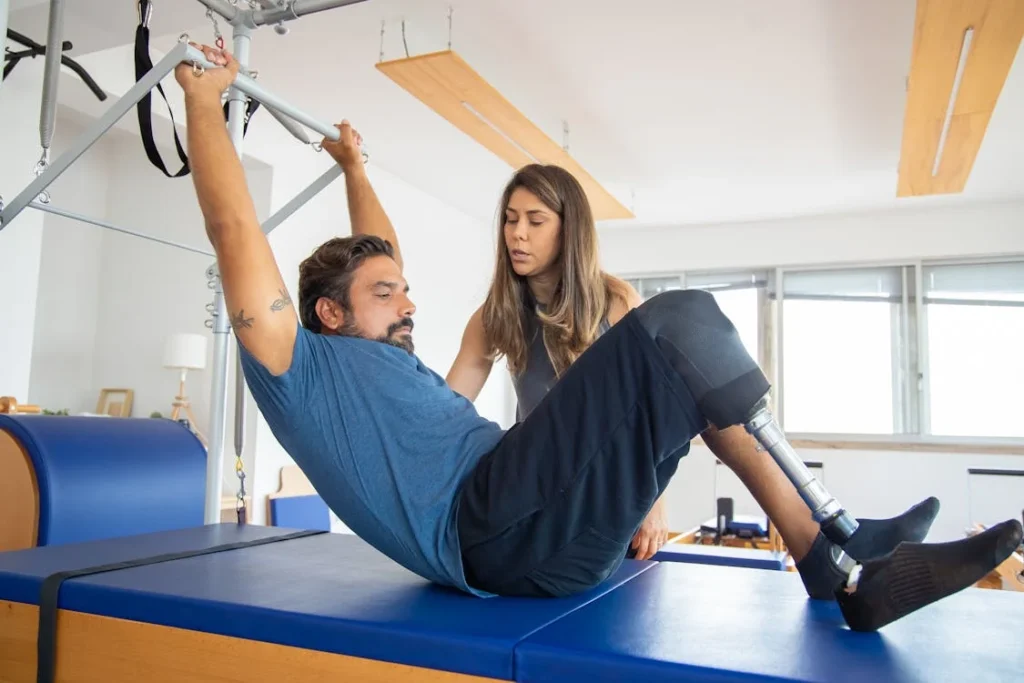
Staying Ahead: Being Proactive With Your Mobility
It’s easy to think that once your prosthetic limb is fitted and aligned, your journey is done. But alignment, like life, is a dynamic thing.
Your daily habits, activity level, body weight, and even your mood can all influence how your prosthesis feels and performs. Being proactive—not just reactive—is the key to lasting comfort and confident mobility.
Make Follow-Ups Part of Your Routine
Just like you’d visit your doctor or get a check-up for your car, your prosthetic limb needs regular attention. Booking periodic visits with your prosthetist helps catch small alignment changes before they cause discomfort or long-term problems.
Even if everything feels okay, your gait might have shifted slightly in ways you haven’t noticed yet.
These routine visits are also a chance to discuss your goals. Maybe you want to walk longer distances. Maybe you’re planning to travel or try new activities.
Your alignment can be adjusted to match your lifestyle—not just your limb.
Don’t wait for pain or fatigue to be your signal. Think of alignment care as an investment in your future comfort, movement, and peace of mind.
Build Self-Awareness Into Daily Life
You don’t need to be an expert in biomechanics to notice how your body reacts to daily activity. Start by checking in with yourself throughout the day. How do your legs feel in the morning versus the evening? Is there a specific motion that feels more tiring than it used to? Do you notice more wear on your shoes, or an uneven footprint?
These observations are more useful than you might realize. They help you understand your baseline so that, when something changes, you can act early.
It’s also helpful to watch yourself walk—from the side, from the front, and from behind. A quick phone video recorded by a friend or family member can reveal things like limping, swaying, or uneven shoulders that you may not feel while walking.
Empowering Your Movement: Alignment as a Lifestyle
Alignment isn’t just a step in your prosthetic fitting process—it’s a part of your everyday lifestyle. It touches every part of how you move, how you feel, and how you engage with the world.
The more you understand and respect that, the more control you have over your mobility.
Start Small, Stay Consistent
Improvement doesn’t have to mean big changes. Even a tiny adjustment—a few millimeters at the ankle or socket—can turn a tiring walk into a smooth stride. The secret is consistency.
Don’t let “it’s not that bad” stop you from getting a better experience. If walking still feels like work every single day, there’s likely an alignment improvement that can help.
Over time, as you become more comfortable and confident, your expectations will grow. You’ll want more freedom, more movement, and less fatigue—and that’s good.
Your prosthesis should evolve with you. What worked during your first fitting may not suit you a year later. Staying open to change is how you continue to improve.
The Emotional Wins Matter Too
There’s no question that proper alignment improves physical performance. But equally important are the emotional wins.
When your prosthesis moves smoothly and naturally, it boosts your confidence in ways that ripple through your life. You walk taller, feel more secure, and trust your body more.
These wins might seem small—like walking across a parking lot without pausing to adjust your balance. Or spending an afternoon on your feet without needing to sit down every hour.
But stacked together, they create a life that feels fuller and more free. That’s what alignment is really about.
Conclusion
Alignment isn’t just a fitting stage—it’s an essential part of your everyday comfort and movement. Static alignment gives you a solid base, while dynamic alignment adapts your prosthesis to how you move in real life. Together, they shape your posture, balance, energy use, and overall confidence.
Even the smallest adjustment can reduce strain, improve stability, and make walking feel more natural. Over time, proper alignment prevents long-term issues and helps you stay active, independent, and pain-free.
If walking feels harder than it should, or you’re constantly adjusting to stay balanced, it might be time for a check-in. Your body deserves a prosthesis that works with it—not against it.
Stay aware, stay involved, and don’t hesitate to ask for support. Alignment is not a one-time fix; it’s a lifelong part of living well with a prosthesis.



